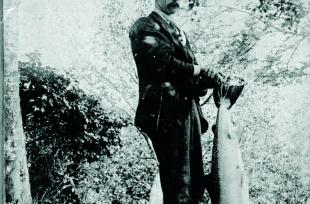The Etne river - and its branches, the Sør River and Nord River, wind, or "meander", through loose glacial sediments on their journey towards the fjord. The river carves away the sediments in the outer swings and deposits them in the inner swings. Under floods, the mass transport is more effective than usual, and the river can do great damage. There have been been big damaging floods through the ages, last in 1983.
The Etne river is best known for its salmon fishing. The fishing season lasts for about 100 days. The landowners' income from fishing-rentals alone amounts to about 1.5 million Norwegian crowns per year.
In the Etne water system the salmon swim all the up to Frettte. Some even fish for salmon at Øyno. Before a small salmon step was built, it was difficult for the smaller fish to pass Håfoss. Salmon swim also up Sør River to the regulated Lake Litledalsvatnet.
As is also the case in other areas of the country, there has been a decline in fish during past years. The total fish catch has varied from 7.7 tonnes in 1990 down to under 3 tonnes annually. Neither has the Etne river avoided problems with regulation of water levels, salmon lice and runaway aquaculture salmon, but the river still maintains a good, natural growth of salmon.



